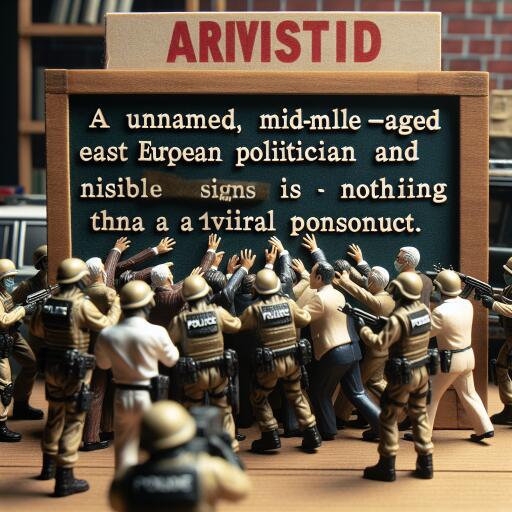Fact Check: Viral Photo Suggesting President Putin’s Arrest Debunked as AI-Generated Illusion
In the wake of President Vladimir Putin’s recent electoral victory, social media has been awash with a surprising image that seemingly depicts the Russian leader being arrested. The photograph, which quickly captured the imagination and concern of many, features President Putin surrounded by police officers in a situation that suggests detention or arrest.
Upon noticing the widespread sharing and discussion of this image, Vishvas News embarked on a meticulous fact-checking mission to authenticate the legitimacy of the claims associated with the photograph.
A curious follower of developments reached out to Vishvas News’ tipline, querying the truthfulness of the image that was purportedly capturing a moment of Putin’s arrest. This inquiry, dated March 16, propelled our team into action.
Our initial steps involved leveraging keyword searches to trace any credible reports concerning Putin’s arrest. Despite thorough scrutiny, we encountered no evidence or reports from reliable sources to substantiate claims of the Russian President’s detainment or arrest. Reinforcing this, a report from Jagran.com dated March 18 highlighted President Putin’s significant electoral win, where he clinched 87.97% of the vote, thus extending his tenure till 2030.
Digging deeper, we analyzed the viral photograph for authenticity. This examination revealed peculiar anomalies — a policeman depicted with six fingers and duplicated facial features among the officers. These findings raised red flags about the image’s origin.
To further our investigation, we utilized Hugging Face, an advanced AI detection platform. Our suspicions were confirmed when the platform assessed the photograph to be 97% AI-generated, indicating that the image was more fiction than fact. We sought the expertise of AI specialist Azahar Machwe, who corroborated the AI-generated nature of the image.
To aid our readers in navigating the complex world of digital imagery, where the line between reality and AI-generated content often blurs, we offer the following tips:
- Zoom In: Begin by closely inspecting the image. High-resolution photos often reveal discrepancies and errors not apparent at first glance. Zooming in can highlight these anomalies, aiding in discerning the image’s authenticity.
- Find the Source of the Image: Uncertainty about an image’s authenticity calls for tracing its origins. Scrutinize the comments below the post for insights or use tools like Google Image Reverse Search, TinEye, Yandex, or Google Lens for a reverse image search to locate the original source.
- Pay Attention to Body Proportions: Analyze the depicted individuals’ body proportions. AI-generated images frequently suffer from distorted proportions, such as irregular hand, leg, and finger sizes, sometimes even varying the number of fingers.
- Excessive Perfection: AI-generated images tend to exhibit an unrealistic smoothness. Assess the image for signs of unnatural perfection, including overly smooth surfaces, in the crowd, roads, and surrounding environments.
In conclusion, the circulating claims suggesting the arrest of Russian President Vladimir Putin are baseless and unfounded. Our investigation reveals that the controversial image is a product of artificial intelligence, designed to mimic reality but ultimately falling into the realm of digital falsehood.
In an era where digital content can be generated and manipulated with increasing sophistication, it’s imperative to approach viral images and narratives with a critical eye, employing the strategies outlined above to separate fact from fiction.










